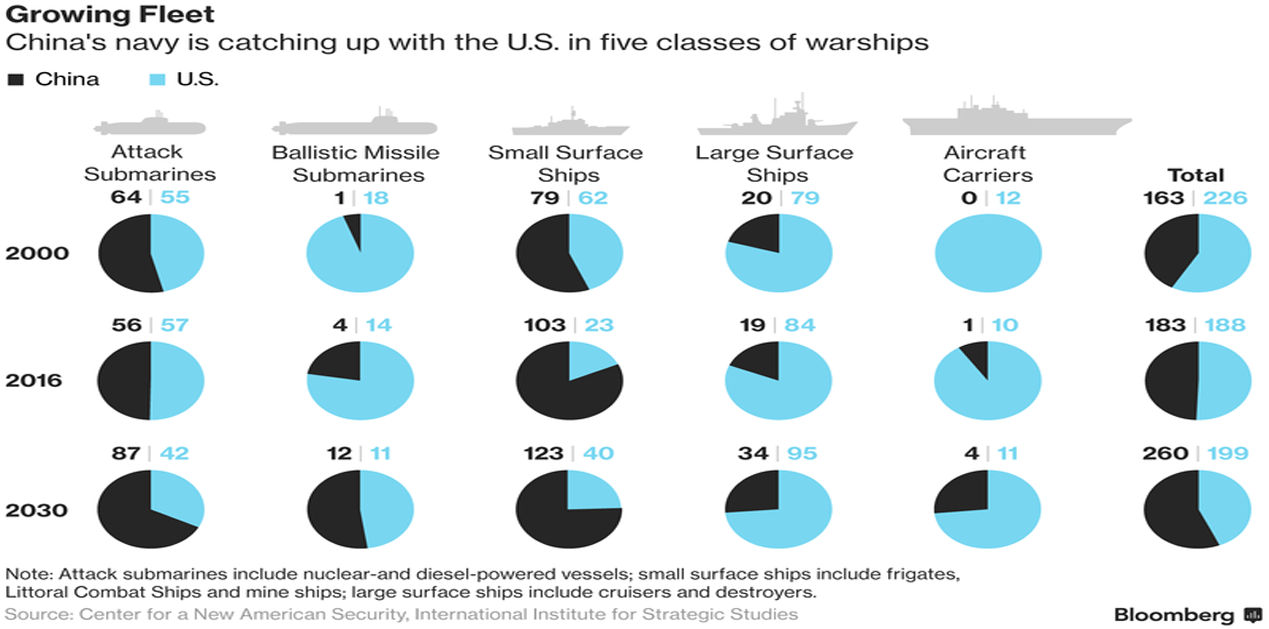Economic corridors, connectivity and port projects, and strategic access arrangements in the Indian Ocean Region resonate in the contemporary oration. Further, China’s 21st Century Maritime Silk Road (MSR), under the Belt and Road Initiative (BRI), is both symbolic and substantive issue of the above homily. The MSR is also a portrayal of Beijing’s ability to provide fiscal resources and technological expertise to develop maritime infrastructure projects, for which it has crafted ‘lend (money) and lease (infrastructure)’ agreements with a number of countries. However, the Chinese strategy has been labelled as ‘creditor imperialism’, ‘debt-trap diplomacy’ and ‘Land of Morning Warning’1, amid fears that host counties may partially lose sovereignty and control of area where infrastructure is being developed.
Leasing territory and developing maritime infrastructure is not a new practice; and in modern times, States have transacted such agreements with allies, partners and friends to advance geopolitical, geo-economic and geo-strategic interests. Similarly, States have leased military assets such as ships, submarines and aircraft to allies and friends to be either returned on expiry of the agreement, or as gifts to them out of goodwill gesture to symbolise the practice of naval diplomacy.
Recalling the Past
One good example of the lend-lease approach is the May 15, 1940 agreement between President Franklin D. Roosevelt and the Prime Minister of the United Kingdom (UK) Winston Churchill, wherein the two leaders agreed to exchange 40-50 old United States (US) Navy destroyers against obtaining British naval and air bases in the Atlantic Ocean on lease2, amid fears that a British defeat would bring Germans to the US shores. Although the US was constrained by the Johnson Act of 1934 that prohibited the extension of credit to countries that had not repaid US loans made to them during World War I - which included Great Britain, Washington invoked the Neutrality Act of 1939 which permitted “belligerents to purchase war materiel from the US, but only on a cash-and-carry basis.” This was further reinforced by a law from 1892 in accordance with which the Defense Secretary can “lease army property for a maximum of five years if the country does not need it.”
On March 11, 1941, ‘an Act to Promote the Defense of the US’ was approved by the US Congress3 and it resulted in the US’ access to various British possessions (in Newfoundland, and many places in the Caribbean) for setting up naval or air bases, on ninety-nine-year rent-free leases. President Roosevelt announced that “The US should loan what articles were needed, as a man would loan his garden hose to help his neighbor put out a fire without reference to payment, but with the expectation that the hose itself would be returned.” 4
Earlier in 1898, after the US victory in the Spanish-American War, Spain relinquished claims on Cuba, and ceded sovereignty over Guam, Puerto Rico, and the Philippines to the US.5 The Cuban government agreed to lease three locations for use as naval or coaling stations including the Naval Station at Guantanamo Bay. Subsequent lease agreements of 1903 and 1934 resulted in the US being granted ‘complete jurisdiction and control over’, so long as they remained occupied.
Soviet / Russian Access Strategy
During the Cold War, the Soviet Union negotiated with other countries a number of agreements for military access. For instance, the Tartus Base in Syria was offered to the Soviet Union in 1971 on a 74-year renewal agreement (49-year lease followed by a 25-year automatic extension).6 One of the significant feature of this agreement was that it stated that the facility will operate outside of Damascus’ legal jurisdiction, and Syria will not interfere with any military activities related to its operation. Russia also leased an airbase in Western Syria for a period of 50 years.
In Vietnam, the Cam Ranh Bay served as a forward base for the Soviet Navy during the Cold War. The lease expired in 2004; and since then, there have been speculations that Moscow is negotiating a deal with Hanoi for access to that Bay. Likewise, in 1964, Soviet Union set up the Lourdes listening post in Cuba and according to the Russian Military Intelligence’s (GRU), it was the ‘greatest single overseas asset’ and ‘provided 60-70 percent of all Russian electronic intelligence data on the United States’.7 After the Cold War, Russia abandoned the Lourdes facility due to financial constraints, as Cuba was reluctant to reduce the annual rent of US$ 200 million for leasing the facility.
China: A Newcomer
China has, by way of agreements, obtained long term leasing rights to a number of ports and maritime spaces in the Indian Ocean and the Mediterranean Sea. These are: Gwadar Port (Pakistan) for 40 years; Piraeus Port (Greece) for 35 years; Djibouti Port for 10 years; Hambantota Port (Sri Lanka) for 99 years; 20 per cent of Cambodia’s total coastline for 99 years; and Feydhoo Finolhu Island (Maldives) for 50 years.8 It is pursuing similar arrangements in other port projects such as Kyaukpyu Port (Myanmar) and Malaka Gateway (Malaysia) for 99 years.
The China-Sri Lanka 99-year lease agreement for Hambantota Port involves 70 per cent stake in the port to the state-controlled China Merchants Port Holdings. The port was developed using Chinese financial and technical assistance totaling nearly US$ 1.3 billion, and the deal invited severe criticism in Sri Lanka. The agreement has been labelled as a ‘debt trap’. Similar fears have echoed elsewhere, particularly in Pakistan, Nepal and Myanmar, who have either cancelled or temporarily put on hold major projects planned by Chinese companies.
Lease of Military Platforms,/strong>
Under the 1941 Lend-Lease agreement, Washington supplied war material (aircraft, ships, tanks, small arms, machine tools, equipment for building roads and air strips, industrial chemicals, and communications equipment) not only to Britain, but also to as many as 30 countries including Australia, Canada, China, France, the Netherlands, New Zealand, Norway, Poland, and Soviet Union.9 A host of new Latin American allies including Paraguay, Brazil, and Peru also benefitted.
In the context of South Asia, the US has been the most important source of military hardware for the Pakistan Navy. The 1954 US-Pakistan Mutual Defence Assistance Agreement resulted in transfer of naval vessels of both US and UK origin (these were paid for by the US) transferred to the Pakistan Navy. Among these, PNS Ghazi (former USS Diablo), a Trench class diesel-electric submarine, was leased to Pakistan in 1963 for four years, which was later sunk by the Indian Navy during the 1971 war. The war resulted in US embargo on military sales to Pakistan, but by 1975 the embargo was eased and the US agreed to supply some military hardware on cash-and-carry basis, an arrangement unacceptable to Pakistan due to financial constraints. However, the 1979 Soviet invasion of Afghanistan placed Pakistan high on the US strategic calculus, and the US agreed to provide on lease Gearing Class destroyers and Brook and Garcia Class anti-submarine frigates on a ‘user pays basis’. After withdrawal of the Soviet forces from Afghanistan in 1989 and the end of Cold War, Pakistan lost its status as a frontline state; and by October 1990, under the Pressler Amendment, the US terminated military and economic assistance to Pakistan and anti-submarine frigates were returned.
As far as India is concerned, New Delhi negotiated an agreement with the Soviet Union to lease a nuclear propelled submarine. A 670 A Skat series (Charlie Class by NATO classification), renamed as INS Chakra, joined the Indian Navy in January 1988. It served both as a training platform for the Indian submariners, and a design laboratory for developing and testing indigenous nuclear submarine technology. On expiry of the lease in 1991, INS Chakra was returned to Russia.
Concluding Thoughts
Lend-lease is not a new phenomenon, and major powers such as the US and Soviet Union have used it as a tool for maximising nation interests, as also to support alliance partners and friends. As far as China is concerned, it is fair to argue that although it is a newcomer to the Lend-lease club, but it still has a promising future. It is exercising economic diplomacy to carve for itself a leadership role as a regional and global stakeholder and promoting financial institutions such as the New Development Bank (NDB) and the Asian Infrastructure Investment Bank (AIIB).
While the Chinese Lend-lease strategy may have an economic intent, the imbedded strategic footprint including approaches to building infrastructure could well be premised on power and interest maximisation, laying the foundations of regional and global role. It is fair to conclude that Beijing may have taken a leaf out of the US’ Lend-lease agreements.
(Dr Vijay Sakhuja is former Director National Maritime Foundation, New Delhi)
End Notes
1. Shelly Mahajan, “Sri Lanka Leases Hambantota Port to China: Is this the Beginning of Chinese Debt Trap in South Asia?”, http://www.southasiaathudson.org/blog/2018/1/14/sri-lanka-leases-hambantota-port-to-china-is-this-the-beginning-of-chinese-debt-trap-in-south-asia (accessed 25 March 2018).
2. “Lend-Lease and Military Aid to the Allies in the Early Years of World War II”, https://history.state.gov/milestones/1937-1945/lend-lease (accessed 26 March 2018).
3. “Transcript of Lend-Lease Act (1941)”, https://www.ourdocuments.gov/doc.php?flash=false&doc=71&page=transcript (accessed 26 March 2018).
4. Galen Varon, A Journey With America's Queen: A Tour Aboard USCGC STORIS (WMEC-38) The "Queen" of the Fleet (Raleigh: Lulu Press,2013).
5. “The Spanish-American War, 1898”, https://history.state.gov/milestones/1866-1898/spanish-american-war (accessed 26 March 2018).
6. “Russia Moves Forward with Syrian Naval Base”,
https://www.maritime-executive.com/article/russia-moves-forward-with-syrian-naval-base#gs.NSaL5qc (accessed 26 March 2018).
7. “Russia to Abandon Bases in Cuba and Vietnam”, Jamestown Foundation, Monitor Volume: 7 Issue: 192, October 18, 2001.
8. Mohan Malik, “The China-India Nautical Games in the Indian Ocean”, https://www.macdonaldlaurier.ca/china-india-nautical-games-indian-ocean-part-one-mohan-malik-inside-policy/ (accessed 25 March 2018).
9. “The Lend-Lease Program, 1941-1945”, https://fdrlibrary.org/lend-lease ((accessed 25 March 2018).
(Views expressed are of the author and do not necessarily reflect the views of the VIF)
Image Source: https://tiananmenstremendousachievements.files.wordpress.com/2017/06/growth-of-chinese-navy.png











Post new comment